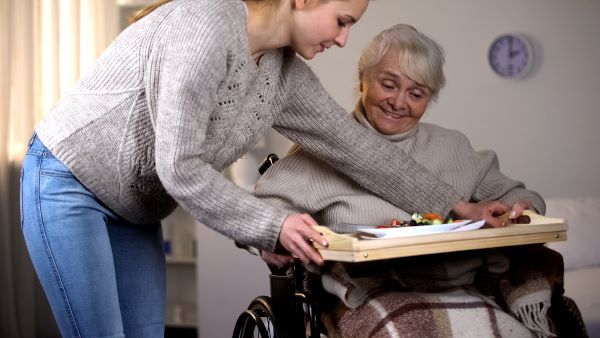
Medicaid’s Shift from Nursing Facility to Home Care
According to Forbes.com, about half of all long-term care insurance claims are from policyholders living with dementia. The federally run program Medicaid is the primary financing mechanism of LTC where most of the monies are spent on institutional care settings that are ill-equipped to handle an increasingly large and longer living elderly population. Federal initiatives have been incentivizing States to utilize Medicaid home and community-based services (HCBS) waiver programs to address the growing long-term care needs of aging Americans. This shift to home and community-based services is often seen as having an obvious benefit. HCBS is seen as an easy fix to offset the increasing demands for long-term care. Evaluation of health outcomes, social equality, and the costs of both settings is necessary to create the most beneficial and efficient systems to care for the aging.
Compounding the complexity in evaluating HCBS versus institutional long-term care is the statistical breakdown of racial and minority ethnic groups, as well as people living with dementia. Racial and minority ethnic groups and dementia sufferers as a whole use these Medicaid services more than non-minority groups. Regardless of the group, people living with dementia tend to need the highest intensity care. While hospitalization rates for HCBS and nursing facility residents remain similar, nursing facility residents were, in general, older and sicker than their HCBS counterparts.
If home and community-based care does not lessen rates of hospitalizations and may create potential implications for inequality in access to high-quality nursing care facilities, policymakers may need to reconsider the full costs and benefits of shifting care. In nursing facilities, even elderly, dual-eligible Medicaid beneficiaries who tend to be older and have more chronic health conditions are not more likely to require hospitalization than those in-home and community-based care. Therefore, since sicker nursing facility residents with more serious health issues and their home care counterparts have similar hospitalization rates, it would seem that HCBS is not lowering the rates of hospitalizations.
McKnight’s.com reports a group of researchers at the University of Chicago are citing why hospitalization rates do not decline under home and community-based care. The majority of home care residents receive help at the hands of untrained caregivers in non-facility settings. Even with appropriate tools available untrained caregiving leads to more undesirable health outcomes. Unsurprisingly, patients living with dementia, who generally require the most intense care, had higher hospitalization rates due in part to living in an unsecured facility and the inability of a caregiver to provide non-stop oversight which is a hallmark need of a person living with dementia.
Medicaid long-term care expenditure is reflecting this shift to home and community-based care, with nearly 60 percent of spending for HCBS. Because hospitalization rates do not substantially decline and inequitable health care for minorities increases while the majority of the budget is expended in the HCBS program it is time to rethink the quality of care and health outcomes and efficiencies of the program. Skilled nursing providers in a facility setting provide better care for all regardless of level and type of sickness, and racial and ethnic groups.
Education and expertise in industries, whether medical, legal or health care occurs because each field requires a unique skill set to drive optimal outcomes. Understanding how long-term care needs affect an individual’s retirement plan under Medicaid or dual-eligible status Medicare/Medicaid, is pertinent for both positive health outcomes and financial well-being. Please don’t hesitate to contact us to discuss your needs and how to plan for long-term care. Please contact or call us at 434-589-2958. We are happy to help.
